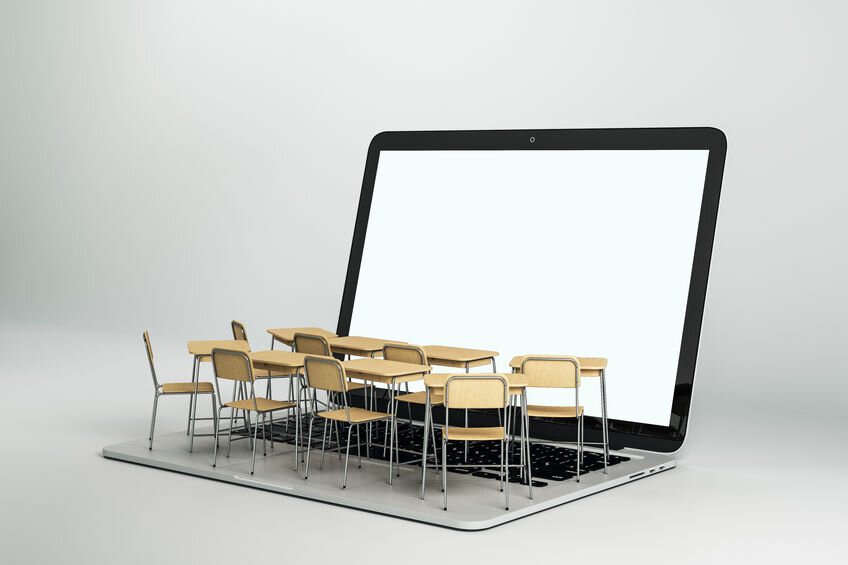Medical Training in the Time of COVID
It’s only been about a year since the COVID pandemic blind-sided institutions of education. At all levels of education, learning diminished to a trickle or a complete halt. Globally it is estimated that 900 million learners have been impacted.
The pandemic effects on healthcare education and training have been disproportionate. As well-trained professionals were in the highest demand, the workforce pipeline in healthcare experienced a shutdown.
How do you prepare trainees for imminent frontline work without the ability to train them?
Since the emergence of the pandemic, this has been the conundrum for academic healthcare institutions.

TWO PHASES OF HEALTH PROFESSIONS EDUCATION
Health professions education, in general, can be divided into two phases.
The first phase is preclinical education. Preclinical learning entails lectures, labs, and book learning. Topics such as physiology, anatomy, and pharmacology cover just part of the curricular requirements.
The second phase is comprised of clinical clerkships. Equipped with considerable book knowledge, trainees are released under close supervision into the arena of bedside learning. Utilizing the apprenticeship model, this medical training phase looks very much as it did over a century ago. Healthcare care learning at the bedside is a far different experience than reading it in a book.
Bedside education in healthcare is the gold standard.
Amidst a worldwide pandemic, bedside training also became an endeavor fraught with risks.
The following is an overview of healthcare education’s response to the once-in-a-century pandemic.
“I know that history is going to be dominated by an improbable event, I just don’t know what that event will be.”
— NASSIM NICHOLAS TALEB, THE BLACK SWAN: THE IMPACT OF THE HIGHLY IMPROBABLE
PRECLINICAL DIDACTICS AND ONLINE LEARNING
Fortunately, the bulk of preclinical learning was already online at most institutions. Over the past decade, following the advent of flipped classrooms, most preclinical curricula have been digitized and managed remotely.
Translation of in-person to online learning is not just a matter of copy and paste into slide decks. There are pedagogical considerations that require serious thought and design. Teaching institutions that have been slow to adopt online learning before the pandemic experienced the greatest challenges.
Relative to the clinical clerkship phase of medical training, the preclinical portion has transitioned with less struggle to a remote format.

IMPACT ON TEACHING HOSPITALS & CLINICAL CLERKSHIPS
Clinical clerkships are vital. All healthcare professions rely on clerkships to deliver education that books and lectures can not. These lifelines to teaching budding healthcare professionals were suspended immediately due to the pandemic.
While critical access services remained open, such as emergency rooms, nearly all elective healthcare was halted for months or drastically reduced.
Elective medical care does not mean unnecessary care. Patients with significant diseases rely on elective care to prevent further deterioration of their health.
Elective medical care comprises the vast majority of medical services and the bulk of learning opportunities for trainee clerkships in medical and surgical arenas. In other words, trainees are experiencing large gaps in their clinical education.
“The practice of medicine is an art, not a trade; a calling, not a business; a calling in which your heart will be exercised equally with your head.”
— MARK E. SILVERMAN (QUOTABLE OSLER – DELUXE EDITION)
FILLING IN THE GAPS
In this context, healthcare educators are filling in the gaps.
How are they doing it?
TELECONFERENCES & WEBINARS
Used before the pandemic as a means of connecting expertise to learners throughout the world, video conferencing the use of webinars as a vessel for medical training have been supercharged. Its adoption experienced a quantum leap.
From grand rounds to morning report video conferencing using Zoom, Google Hangouts, Skype, GoToMeeting, and WebX has become the cardinal means of delivering didactics.
SOCIAL MEDIA
Social media is being used in innovative ways to deliver curated content to healthcare trainees. Clinical tutorial series from world-class educators have emerged with links to amazing educational content. Primarily pushed out over Twitter, these series have been dubbed ‘Med Tweetorials.’
The benefit of ‘tweetorials’ is their accessibility. They are free, convenient, and allow learners to interact with experts. The downside is the lack of peer review of the content and content that may be too subspecialized for most healthcare professionals in training.
According to the British Medical Journal (BMJ), MedTweetorials, @medtweetorials is a recommended and reliable source.

TELEMEDICINE
Traditionally on clerkships, trainees meet with patients first and gather a history of present illness, followed by a focused exam. This information is then presented to a preceptor, and discussion follows. Except for the physical exam, most of this information gathering is amenable to virtual consults.
Developing the skill of obtaining a medical history and history of present illness is essential for any health professional. So much so that a well-done history and physical can diagnose a patient over eighty percent of the time.
The use of telemedicine is allowing trainees to continue the practice of gathering a robust history and presenting cases to their preceptors as has been done for the entirety of modern medicine.
Innovation in the realm of telemedicine and clinical teaching continues to expand. Healthcare may very well look different on the other side of this pandemic.
SIMULATION AND VIRTUAL REALITY
Simulation-based medical education (SBME) is a mainstay of preparing health professionals even before the pandemic. SBME was already filling the gaps created by less and less access to patients for health professionals’ education.
After the pandemic, nearly all in-person simulation training was suspended. The result has been an increased interest in telesimulation. Telesimulation is a form of learning that combines telecommunication resources with simulation resources, allowing students to participate in medical simulation exercises from off-site locations.
The coupling of asynchronous video content and synchronous telesimulation sessions is one innovation that has emerged from the pandemic. In at least one example, this hybrid model was used to train healthcare professionals on COVID ventilator management strategies.

LOOKING FOWARD
All the ways the pandemic has impacted health professionals’ education is yet unclear. This crisis has accelerated medical education innovations, such as social media, telesimulation, and telemedicine. Many of these innovations will remain.
Just as with COVID, we will not fully understand these changes’ effects for years to come. With limited access to classrooms and patients for learning, the short-term consequences are apparent, but the long-term effects on quality of care and patient safety are unknown. In the interim, healthcare training organizations continually adapt to meet the challenges introduced with the pandemic.
Resources
- Medical and Surgical Education Challenges and Innovations in the COVID-19 Era: A Systematic Review https://iv.iiarjournals.org/content/invivo/34/3_suppl/1603.full.pdf
- Telesimulation for COVID-19 ventilator management training with social-distancing restrictions during the coronavirus pandemic https://journals.sagepub.com/doi/full/10.1177/1046878120926561
- Learning under lockdown: navigating the best way to study online https://www.bmj.com/content/369/bmj.m1283.short
Written by Hector Caraballo, MD for MedCognition. MedCognition created PerSim®, the holographic patient assessment simulation system made to help healthcare’s frontline save more lives.



